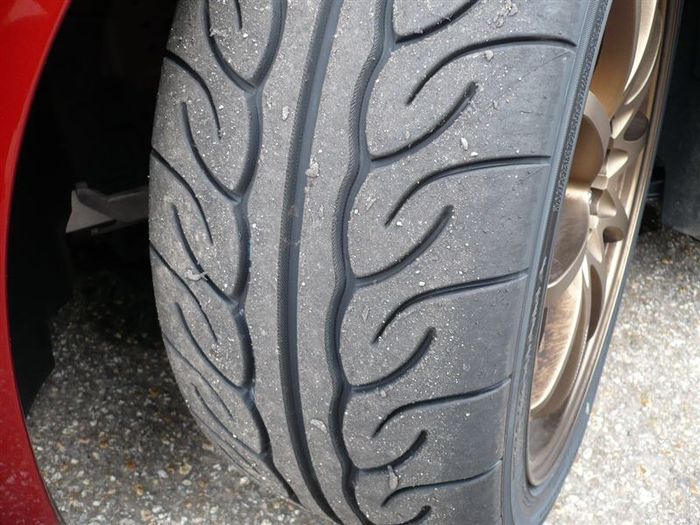All Categories
Featured
Table of Contents
The Michelin offered a comfortable driving experience, characterised by responsive guiding and a modern understeer balance. In spite of the cooler screening problems, Michelin's regular time and grip over three laps suggests its viability for real-world applications.
The tyre's very first lap was a 2nd slower than the second, pointing to a temperature-related hold boost. For day-to-day use, the Michelin may be a more secure wager.
Wheel Balancing (Alexander Heights)
It shared Michelin's safe understeer balance however did not have the latter's desire to turn. Continental and Goodyear's performances were significant, with Continental's brand-new PremiumContact 7 showing a considerable enhancement in wet conditions compared to its precursor, the PC6. This model was much less conscious pack adjustments and acted similar to the Michelin, albeit with somewhat much less interaction at the limitation.
It incorporated the risk-free understeer balance of the Michelin and Continental with some stylish handling, verifying both predictable and quick. As an all-rounder for this Golf GTI, Goodyear's Uneven range was the standout, showing outstanding performance in the wet. Lastly, the Bridgestone Potenza Sporting activity took the crown as the fastest tire, albeit by a small margin.
Vehicle drivers seeking an amazing damp drive may find this tire worth thinking about. The standout entertainer in damp braking was the newest tyre on examination, the PremiumContact 7, though the results are nuanced.
Top Tyre Checks Near Me
Preferably, we wanted the cool temperature test to be at around 5-7C, yet logistical delays meant we checked with a typical air temperature of 8C and water at 12C. While this was cooler than conventional test conditions, it was still warmer than real-world conditions. The cozy temperature examination was done at approximately 18C air and 19C water.
The third run entailed damp stopping tests on worn tyres, especially those machined to 2mm with a small encounter. While we intended to do more with these worn tires, weather condition restrictions limited our testing. It's worth noting that wet stopping is most essential at the worn state, as tires usually enhance in dry conditions as they wear.

Bridgestone, Goodyear, and Michelin saw the least efficiency decrease when worn. The Hankook tyre registered the smallest performance decline as temperatures cooled, yet it was amongst the most affected when put on.
Tyre Checks
The take-home message right here is that no solitary tire excelled in all elements of wet stopping, suggesting a complicated interaction of factors affecting tyre efficiency under different problems. There was a standout tyre in aquaplaning, the Continental completed top in both straight and curved aquaplaning, with the Michelin and Goodyear also great in much deeper water.

Yokohama might take advantage of a little even more grip, an issue potentially affected by the cooler problems. As for managing, all tyres done within a 2% range on the lap, demonstrating their top notch performance (Car tyre fitting). Considering these tires basically target the exact same customer, it's interesting to observe the significant distinctions in feel.
The shock is due to the fact that the PremiumContact 6 was among my favourites for stylish completely dry drives, yet its successor, the PremiumContact 7, seems more fully grown and looks like Michelin's performance. Amongst these, Hankook was the least precise in steering and communication at the restriction. Tyre fitting. Both Michelin and Continental used charming preliminary steering, albeit not the fastest
If I were to suggest a tire for a rapid lap to an amateur, say my father, it would certainly be among these. We have the 'enjoyable' tires, specifically Yokohama and Bridgestone. Both were quick to steer and felt sportier than the others, however the compromise is a more lively back side, making them much more challenging to deal with.
Trusted Tyre Safety Checks Near Me
It gave similar guiding to Bridgestone however provided far better feedback at the restriction and better hold. The Bridgestone Potenza Sporting activity, nevertheless, appeared to weaken rather quickly after just 3 laps on this requiring circuit. Last but not least, there's Goodyear, which placed itself someplace between the fun tyres and those often tending in the direction of understeer.
All in all, these tyres are outstanding performers. In terms of tire wear, the approach used in this examination is what the market refers to as the 'gold standard' of wear.
Both the Bridgestone and Yokohama tires substantially underperformed in contrast to the other 4 tyres in terms of rolling resistance, with Continental slightly outmatching the rest. Relating to the convenience level of the tires, as prepared for, many showed an inverted correlation with handling. The Continental, Michelin, and Goodyear tyres carried out best throughout various surface area types evaluated.

Bridgestone began to reveal signs of suppleness, while Yokohama was specifically disconcerting over pits. We did measure interior sound levels; nonetheless, as is commonly the case, the results were carefully matched, and because of weather constraints, we were unable to perform a subjective assessment of the tyres noise. We looked at abrasion figures, which gauge the quantity of tire tread lost per kilometre, normalised to a one-tonne car.
Performance Tyres ( Wanneroo)
This number stands for the quantity of rubber dust your tyres generate while driving. Michelin led in this classification, producing over 9% less rubber particulate issue.
Latest Posts
Affordable Discount Tyres
Tyre Repair Near Me – [:uarea] [:postcode] [:state]
Top Cost-effective Car Tyres Near Me – Swan 6063 WA